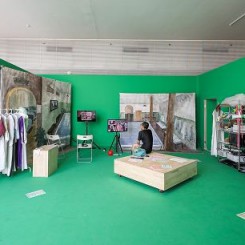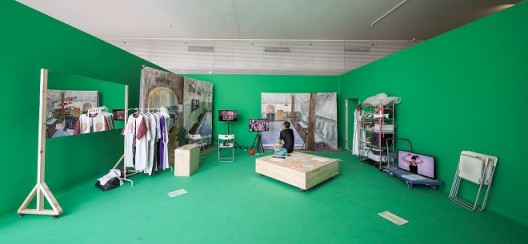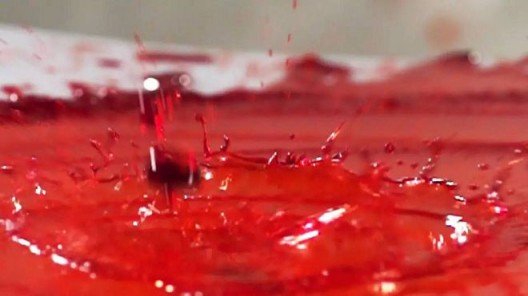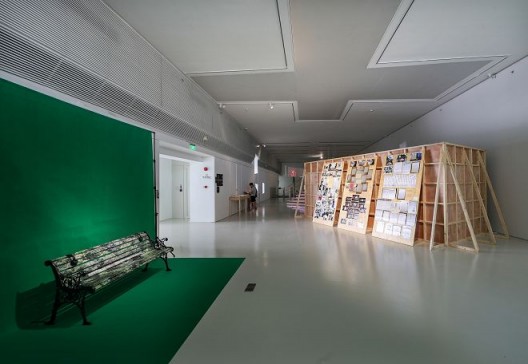“Pan Yuliang: A Journey to Silence”, Times Museum (Guangzhou, China), Sep 23–Nov 19, 2017
Pan Yuliang (b. 1895, Yangzhou, d. 1977, Paris), one of the few female members of Chinese emigrés in Paris, including Sanyu, who formed what has come to be known as one of the important sources of Chinese modernism.
Were it not for the list of artists and the brief introduction, “Pan Yuliang: A Journey to Silence” probably would have misled most into thinking it was a modern art show in a contemporary art institution. Yet only Pan Yuliang’s name is here, not her paintings, while in the space there are works by contemporary artists. This admixture of the contemporary and the modern arose from an invitation and emerged as an organizational strategy for the exhibition.
As the curator of the Times Museum in Guangzhou, Nikita Cai’s occasion to curate this exhibition originated in an invitation by Villa Vassilieff. In 2016, the Pompidou started to digitize photographic plates of the photographer Marc Vaux, who had over 25,000 photographs that captured the working environment and lives of known and unknown artists living in France from the 1930s to the 1970s. To sort out the identities of some of these unknown artists, Villa Vassilieff, in collaboration with the Pompidou in organizing the archives of Marc Vaux, invited Nikita Cai to take a look at the Chinese artists in the photographs. Nikita Cai was frank in stating that the reason she chose Pan Yuliang as the subject of research was because she was female. Ever since the bulk of Pan’s works and personal items were shipped back to China in 1984, the public’s knowledge of the artist has primarily been molded by mass culture, films, TV dramas, and fictional biographies—the image of a female painter. Moreover, in contrast to some of her Chinese counterparts who also studied in France, Pan Yuliang’s “absence” in the development of modern art in China as well as her “silence” in France back then allow for greater possibilities for discussion.
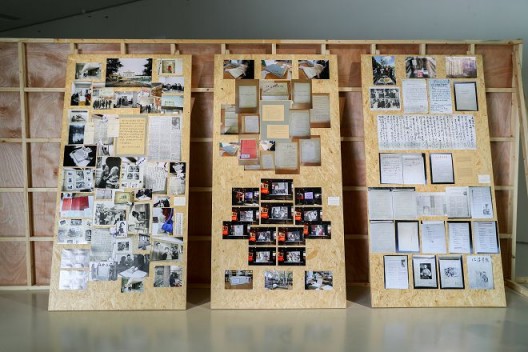
于渺,《“这不是严肃的艺术史……”系列之“沉默的旅程”》,多媒体装置,尺寸可变,2017
Mia Yu, “This is Not Serious Art History…” Series — “A Journey to Silence”, mixed-media installation, variable dimensions, 2017
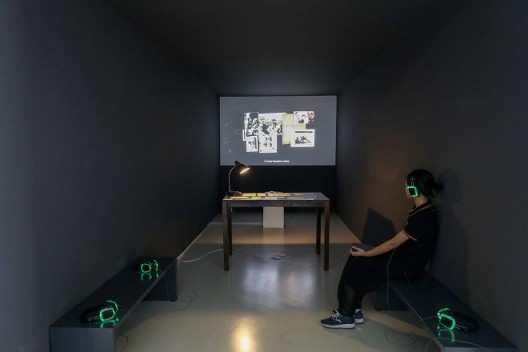
于渺,《“这不是严肃的艺术史……”系列之“沉默的旅程”》,多媒体装置,尺寸可变,2017
Mia Yu, “This is Not Serious Art History…” Series – “A Journey to Silence”, mixed-media installation, variable dimensions, 2017
The exhibition was previously presented at Villa Vassilieff in Paris, with artists Mia Yu, Wang Zhibo, Huang Jingyuan, and Hu Yun. When the project landed in China, it was not shown in Anhui Provincial Museum, which had the largest collection of Pan Yuliang’s work, but rather at the Times Museum in Guangzhou. Aside from the fact that Nikita Cai is part of the Times Art Museum, it seemed that such an “un-solemn” exhibition project would not have been easily accepted by a historical exhibition institution. After all, in Anhui, Pan Yuliang’s works are exhibited more or less alongside extinct lifeforms; to a large degree, the works could only passively await the mandate of the exhibition from up high, with approval to lend to exhibitions at museums only “of the same class”.
With Pan Yuliang as the subject, the exhibition intends not to dig into the injustice brought about by the artist’s gender, or hackneyed topics such as her own self-awakening or her “femininity”. Instead, Cai invited contemporary artists (male and female) to present, based on their own understanding of Pan, the condition of women or of female artists in the realm of mass culture today. In this exhibition, Pan Yuliang is absent—as Nikita Cai mentioned in her dialogue with Mia Yu, there is not a single work by Pan Yuliang in the show because of the cooperative difficulties in the “class” of museums (between state and private institutions). And yet Pan Yuliang is present, only that she has been broken down into multiple keywords and merged into the works of the participants. Such a thematic show avoided difficulties in borrowing her works, while the curator had no stringent requirements in how the works connected to the theme. The different depths of feeling various individuals had towards Pan Yuliang formed a flexible space, with the works limited not to talk of art or gender. There is moreover, something of a hook in using an older artist’s name, with the content of the exhibition not easily grasped.
The work that pertains the most to the theme is definitely Mia Yu’s multi-media installation, “A Journey to Silence”. Outside the little structure where the video is played, on three wooden planks are all kinds of materials Yu collected everywhere from Paris to Anhui, presenting the collected understanding of Pan Yuliang from different institutions and individuals. In a few records at the archives of the Parisian police, she is an object of surveillance; in a thin folder at a National Library of France, she is an outsider in Western art history; in the documents of the Anhui Provincial Government, her identity received a “correct” definition. In contrast with some of her male counterparts who also studied in France, her personality and biography seem to have become more interesting than her artistic oeuvre. Pan Yuliang’s individual voice lingers in the letters between the artist and Pan Zanhua, but what they discuss does not stray far from household work. In the piece, Mia Yu brings together these non-artistic archives, domestic and international, sometimes filtered from standard art history, and in the video, addresses Pan Yuliang’s silence and absence. With the archives differing from institutions to places, Pan Yuliang’s historical position is discussed over a broader spectrum. Yu’s cross-regional and cross-disciplinary mode of art historical (re-)writing has rendered the artist more vivid and three-dimensional. In the video, Mia Yu’s presentation of Pan Yuliang’s social circumstances is far greater than the explorations of her artistic achievements. The relative scarcity of archival material that attests to Pan Yuliang’s artistic achievements perhaps shows the seriousness of her absence on the art historical stage.
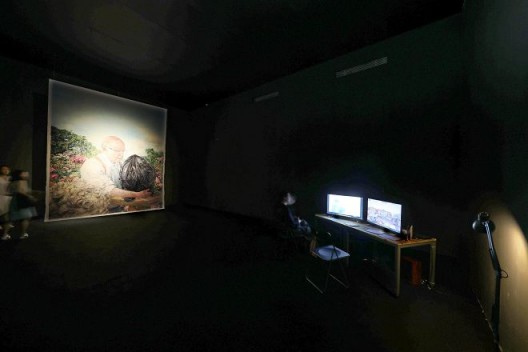
黄静远,《良玉: 三位中国艺术家》,双频影像装置,15分钟,2017
Huang Jing Yuan, “Unkind Jade: Three Chinese Painters”, video installation, 15’, 2017

黄静远,《良玉: 三位中国艺术家》,双频影像装置,15分钟,2017
Huang Jing Yuan, “Unkind Jade: Three Chinese Painters”, video installation, 15’, 2017
For the audience, then, aside from “correcting” their superficial knowledge of Pan Yuliang, the expressive mode of some works lies to a large degree in helping viewers undergo an understanding of the self. For Theater 44, “reshooting” five scenes from the film Painting Soul (Hua Yun) created a platform through which to enter into dialogue with the public. The five performative symposia invited viewers to participate over the course of the exhibition—to discuss the roles women play in the family and in society, the experiences of gender, and the roles of the mother and that of the painter, among others; through modes of reenactment and discussion. It rewrites one’s own understanding of the exhibition. In one work, Pan Yuliang becomes a “call word”, while the participants’ individual experiences become the chief element in understanding the exhibition, much like the organizational format of Theater 44. Power and subjectivity are removed from the work.
To take an example, one participating artist, Huang Jingyuan, hosted the third forum, “The Mother and the Painter.” The role of the woman in the family has always been talked about in discussions about the equality of the sexes, and yet society expects more of mothers than from fathers. Women working in art have no way of avoiding weighing the importance of being an artist versus being a mother. For Pan Yuliang, before 1937, she had the double identity of being a painter and a mother; after that year, living alone in France, she was only a painter, where she immersed herself in investigating her own individual artistic language. This is not to say being a “mother” affected her art, but it is a point observers can identify with. Through open calls, participants of various ages and professions discussed the relationship between painting and the family. As the initiator of the “Writing Mother” project, the relationship of the mother and painter in Huang Jingyuan’s life is an important aspect: most of her mother’s life revolved around two painters (Huang and her father), while Huang also reflects on whether one could be a mother and painter at the same time. The project was divided into three. First, the artist discussed the possibilities in painting; then, the participants read out statements made by others; and then was the discussion. Here were those who do art in order to realize their mother’s wishes; mothers who ended up liking painting because of their children, those for whom painting could be a tough profession to make a living from and instead a form of venting emotions; and people who think the roles of the mother and the artist are similar in how each faces solitude alone.
A series of events took place outside the Guangdong Times Museum, on the rooftop of a non-profit space. The discussion about Pan Yuliang was not limited to how mass culture fashioned her or her actual individual experiences but, even more daring, “rewrites” her life in Paris, imagining her intervention in modern French art.
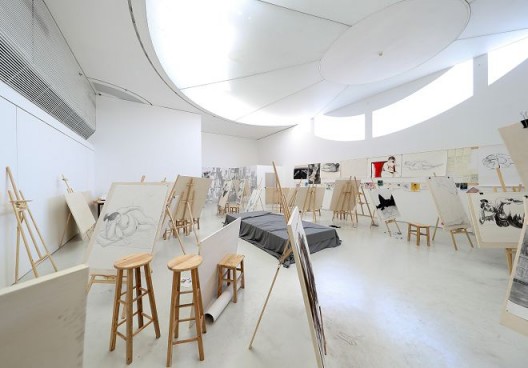
秦晋,《油画系之人体素描课&艺苑绘画研究所之时代画室》,2017
Qin Jin, “Oil Painting Department—Nude Sketching Course & The Painting Research Institute —Times Studio constructed situation”, variable dimensions, 2017
From Mia Yu’s work near the entrance, the other works gradually had less connection with Pan Yuliang. Professor Qin Jin of the Guangzhou Academy of Fine Arts was juxtaposed with one of Pan Yuliang’s identity as an art educator. Before the opening of the exhibition, Qin Jin transposed sketching from life in oil painting—something from traditional academic painting that has endured to this day—into the exhibition space. Attendance rolls, pedagogical plans, robes in the changing room, slippers, completed and half-completed works of nude sketches, brushes placed higgledy-piggledy and pencil shavings on the floor: the silent scene recreates the conditions of an art classroom at rest. During the exhibition, the museum also invited people to take part in sketching from life. Such an arrangement and setting more or less allows the public to view and experience an art school classroom. The human body was Pan Yuliang’s source material throughout her life. Drawing from life, once upon a time a challenge to traditional mores in China, has already become a required course in art pedagogy, while at the same time it has also become an activity that parrots an exercise book. Away from Pan Yuliang’s context, this work seems more like a pedagogical practice inserted into the community, testing the level of aesthetic education in the masses. Will people who have never had training in sketching from nudes see the human body as a teaching tool or an erotic object? And as for an ordinary Chinese public that sees art as representative of the non-mainstream and of rebellion, who often see art school as the congregation of the worst students (for instance, students with poor grades are often advised to do three months of art training to try their luck at art academies, with lower entry requirements, in order to get themselves a degree), will they see such overly expressive sketching on-site as art, or as “bad paintings”?
Nikita Cai has not overly interfered with the artists’ work; the varying degrees to which different individuals have been affected by Pan Yuliang can be seen in their work. Hu Yun’s work “Jardin du Luxembourg” takes as the point of departure Pan Yuliang’s cultural and identity differences from China to Paris. Five benches, printed with scenes of a park, are placed throughout the exhibition space. The sound work seemed a bit like a language-learning course, with one voice speaking in English, and another corresponding in French. Hu Yun broke down Pan Yuliang’s narration as fragments, with the non-sense discourse and the non-Chinese expression forging a sense of unfamiliarity. Elsewhere, Wang Zhibo uses her own imagination and created a “memorial hall” for Pan Yuliang. In this narrow, long space, the uneven flooring made of steel plates seems to purposely make viewers slow down and view the works and objects arrayed on the two sides. On one side are still-life objects and painting tools wrapped in bitumen; familiar objects, like fruit and brushes are fused into unusual objects coated in black. On the other side are paintings with female figures, faces that resemble Pan Yuliang; the boundaries between figures and objects in these images are unclear, with non-human conditions appearing in Pan Yuliang’s modern context. Discarding the clamorous din of history, she was a sojourner in the lives of others, a subject and symbol painted. Out of the whole exhibition, Song Ta’s multi-media installation “Who, What, Why, Nirvana” seems to have the least to do with Pan Yuliang. In the video, secretions—which appear like menstruation fluid, semen, and saliva, among others—merge into a resplendent visual feast. These viscous liquids are the remnants of an orgy, and witnesses to sin.
This exhibition is not a fond commemoration of Pan Yuliang, nor a “solemn” discussion of her being silenced in art history. At the Times Museum in Guangzhou, Pan Yuliang seemed like the creative material, allowing the exhibiting artists to excavate elements that tally with art produced today. And such an open theme has granted the artists greater room for maneuver. “Pan Yuliang” then becomes a sort of psychological suggestion—and so no matter the degree to which the works connected to the theme, for viewers there is some sort of unease between the work. Moreover, through the trajectory in the exhibition, viewers gradually shifts from a renewed understanding of Pan Yuliang to an understanding of one’s own circumstances.
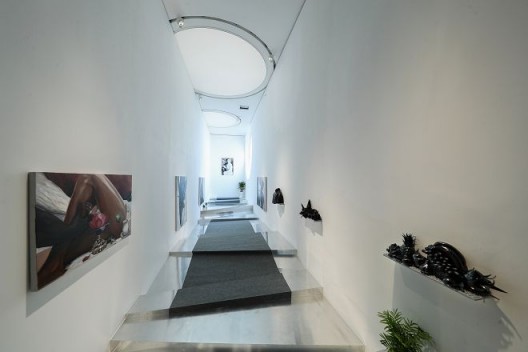
王之博,《你的意中人的心时刻在你身边》
Wang Zhibo, “The Heart of Your Beloved is Always by Your”, Side mixed-media installation, variable dimensions, 2017

王之博,《作为一个画家,颜色总是问题》
Wang Zhibo, “As a Painter, Color Always be a Question”, oil on canvas, 155 x 115 cm, 2017
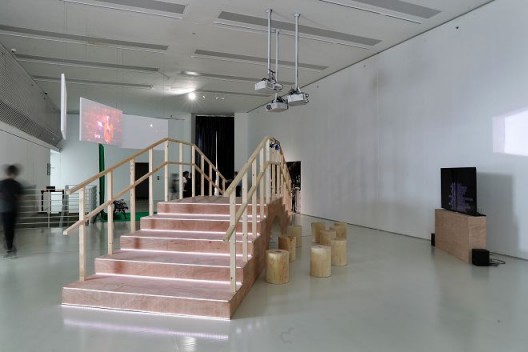
方璐,《影院》(左)和《中国乐园》(右)
Fang Lu, “Cinema”, three-channel video installation, 2013 (left); Fang Lu, “China Wonderland”, single-channel video installation, 2017 (right)
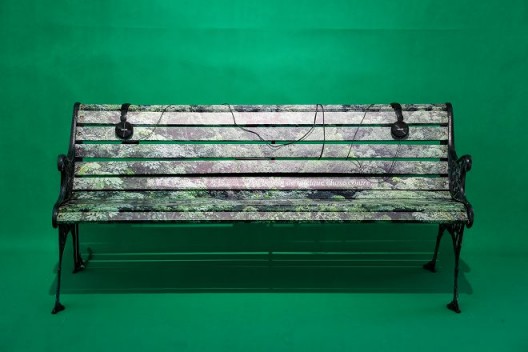
胡昀,《卢森堡公园》,多媒介装置,尺寸可变,2017
Hu Yun, “Jardin du Luxembourg”, mixed-media installation, variable dimensions, 2017

胡昀,《卢森堡公园》,多媒介装置,尺寸可变,2017
Hu Yun, “Jardin du Luxembourg”, mixed-media installation, variable dimensions, 2017
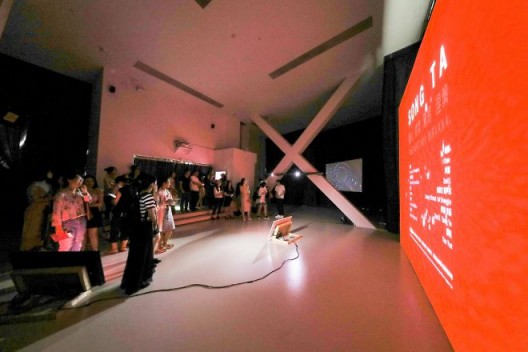
宋拓,《谁人、何物、焉思、涅槃》,视频装置,尺寸可变,2017
Song Ta, “Who, What, Why, Nirvana”, video installation, variable dimensions, 2017

